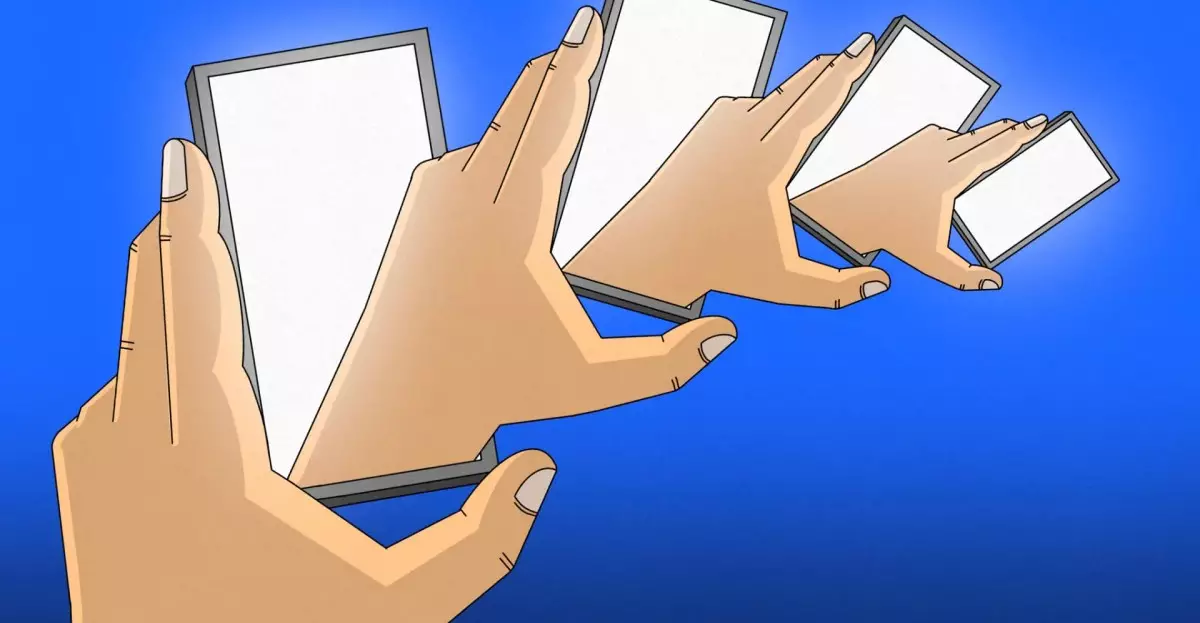In the realm of wearable technology, few names evoke as much nostalgia as Pebble. Originally launched through a crowdfunding campaign, the Pebble smartwatch quickly gained popularity for its simplicity, long battery life, and capability to deliver notifications. However, as the tech landscape evolved, so did consumer preferences; the era of simple smartwatches faded away. Fast forward to 2023, and Eric Migicovsky, Pebble’s founder, is finding ways to revitalize this beloved device. While the revival of Pebble is exciting news for fans, it does raise questions about the relevance of such technology in today’s market and whether it can succeed amidst the myriad of smartwatches boasting sophisticated features and touchscreens.
While Migicovsky’s endeavor with Pebble has garnered attention, the fate of the Small Android Phone Project—a concept that aimed to bring back compact smartphones—is still in limbo. Despite initial enthusiasm, the project appears to have taken a backseat, much to the dismay of small phone aficionados. In 2023, as consumer demand for sleek, manageable devices continued to decline, it became evident that finding a niche market for small smartphones was increasingly challenging. By 2025, it seems the dream of compact phones has been overshadowed by Migicovsky’s focus on Pebble. He expressed hopes that another innovator might step in to fill that void but emphasized that small phones are no longer his priority. This pivot raises questions: Can a hybrid approach that satisfies both smartwatch and compact phone enthusiasts find its footing in a world obsessed with larger screens?
The forthcoming Pebble smartwatch promises to blend the essence of its predecessors with new functionalities that cater to contemporary users. Migicovsky has been quoted expressing that this upcoming version will not attempt to reinvent the wheel, suggesting it will retain the familiar aesthetic and operational simplicity fans loved. Instead of attempting to compete with high-end competitors boasting touchscreens and a myriad of applications, the new Pebble intends to offer open-source software, allowing users to modify and enhance it according to their own needs. This move towards customization could resonate with a niche segment of tech enthusiasts who find joy in tinkering, yet it also poses a challenge: how does one market a device that requires user intervention to be fully realized?
As of now, the new iteration of Pebble remains shrouded in mystery, though several confirmed features provide tantalizing insights into what consumers can expect. The introduction of new hardware, crafted around a specific Bluetooth system-on-chip, hints at a focused functionality rather than an overwhelming array of features. Additionally, the promise of user-loaded firmware underscores a desire to foster a community-driven ecosystem, inviting developers to contribute their ideas and enhancements. The ambition to integrate a chat client and potentially link to AI features—like engaging with ChatGPT—indicates a forward-thinking approach, albeit one that may not cater to mainstream users who expect instant usability without the need to delve into hardware complexities.
As Migicovsky gears up for meetings in Shenzhen to finalize the details of this anticipated smartwatch, the question remains: can consumers embrace this new Pebble as both a nostalgic reminder of simpler times and a functional device in a modern setting? The implications of such a revival might be bigger than Pebble alone; it could signal a shift in consumer desire for products that prioritize utility and simplicity over extravagant features. If successful, the new Pebble could carve out its own space as a beloved tool for those who see beyond the glitzy superficiality of most modern smartwatches, serving as a reminder that sometimes, less truly is more.
While the revival of the Pebble smartwatch under Eric Migicovsky’s leadership is an exhilarating prospect, it comes with uncertainties that could define its success or failure. Questions about its market relevance, the balance between simplicity and functionality, and the potential for community engagement will linger in the minds of enthusiasts until the watch subsequently appears on shelves. Ultimately, the journey of Pebble may serve as a testament to the evolving relationship between technology and its users, where nostalgia can reignite innovation in unexpected ways.


Leave a Reply